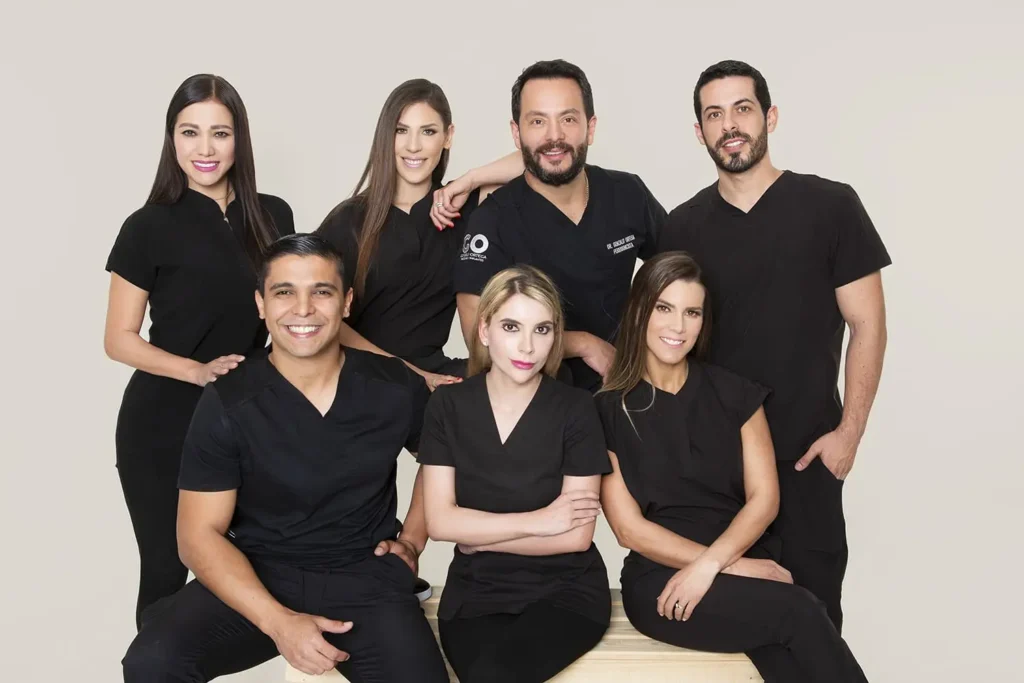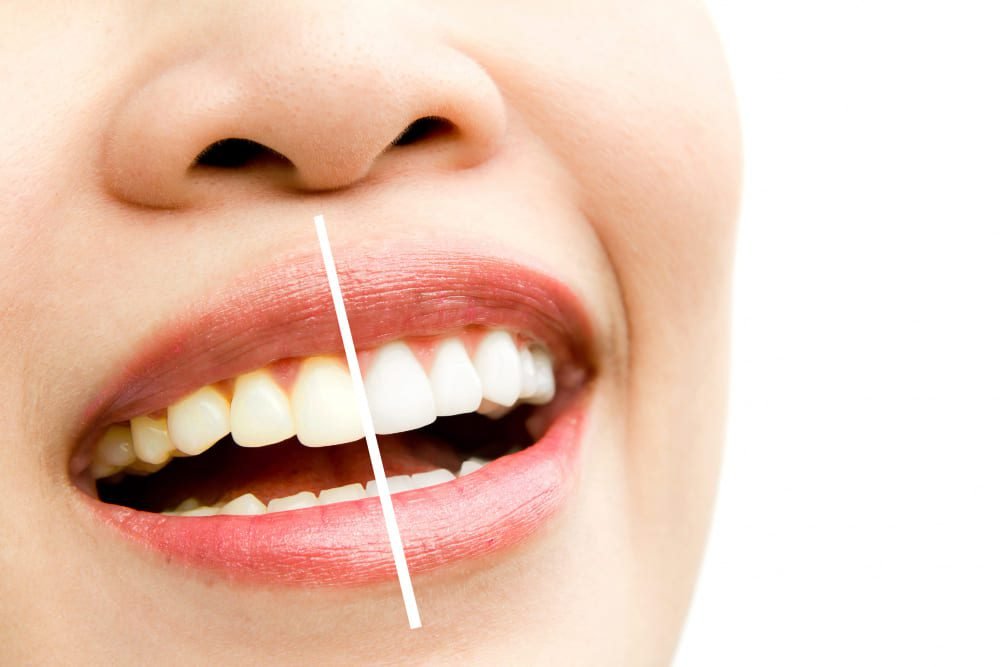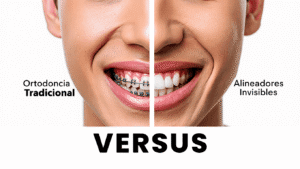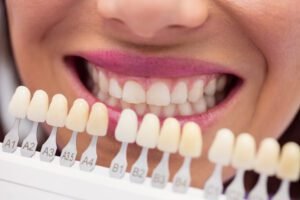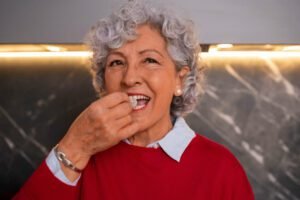Before treating, you need to classify: extrinsic stain or intrinsic?
When a patient comes in with “stained teeth,” the first thing I do is classify the stain.
- Extrinsic: they “stick” to the surface (coffee, tea, wine, tobacco, plaque). They usually come off with professional cleaning and polishing.
- Intrinsic: they live “inside” the tooth (fluorosis, trauma, antibiotics, aging) and require chemistry (whitening) or restoration (ICON, veneers).
What we evaluate during the consultation
Color and pattern (general yellow vs. brown/black spots vs. chalky white), location (interproximal, edge, neck), history (habits, trauma, medications), and response to simple tests (brief trial prophylaxis in one area).
Experience: more than half of the “impossible cases” improve significantly with a precise diagnosis and a step-by-step treatment plan from least to most invasive. The common mistake is jumping straight to whitening or veneers… when an advanced prophylaxis already delivered 80% of the result.
Step 1 — Professional prophylaxis: from ultrasound to Air Flow
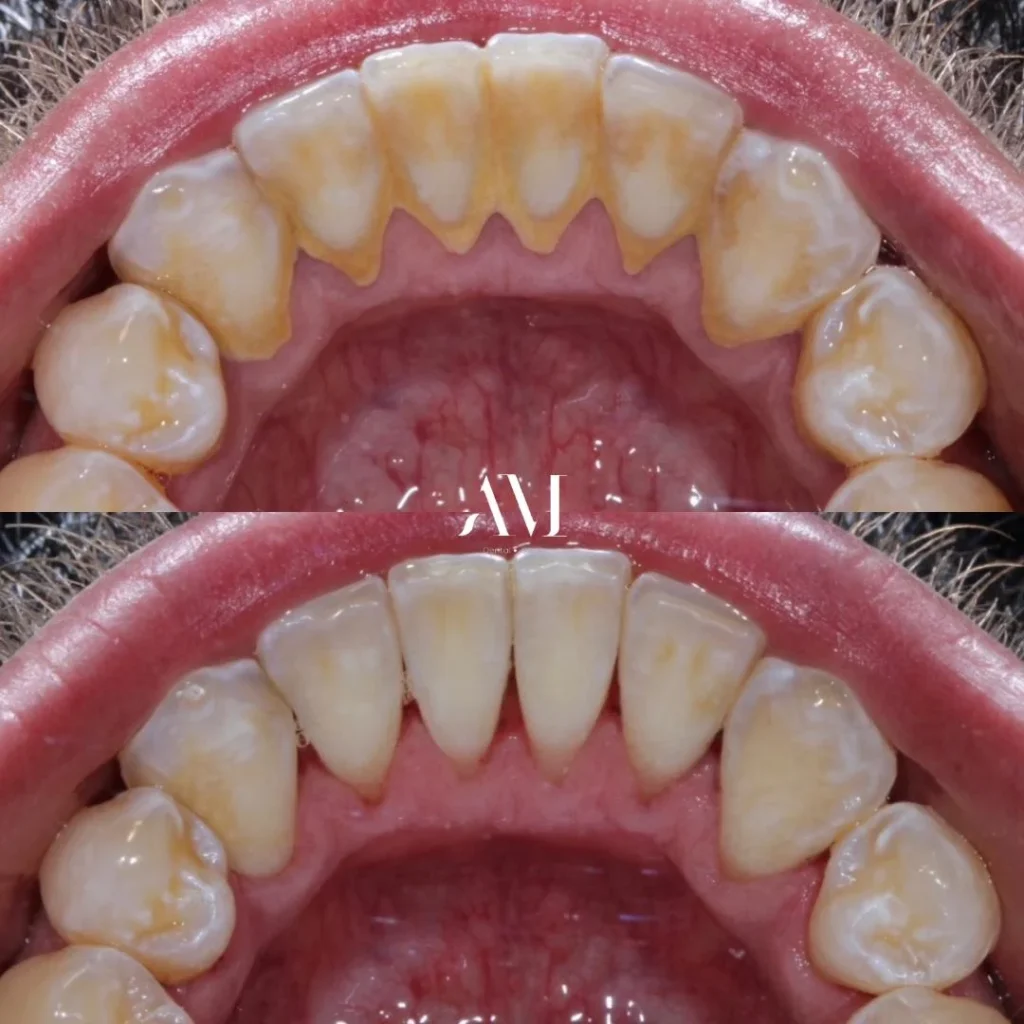
We start with the basics (and super powerful): dental cleaning to remove plaque, tartar, and surface pigments. If the stain is extrinsic, this is where most of the “magic” happens. For common questions, here’s a clear guide: differences between scaling and cleaning (spoiler: they’re not the same). (amdentalstudiogdl.mx)
When is a cleaning enough?
- Interdental stains from coffee/black tea.
- Pigments from foods and drinks (moles, sauces) or hygiene lapses.
- General yellowish “shadow” from accumulated plaque. placa acumulada.
If appropriate, I recommend an in-clinic Dental Cleaning and a maintenance plan (every 6–12 months depending on risk). (amdentalstudiogdl.mx)
In my practice, “coffee lovers” improve a lot with: cleaning + polishing, habit adjustments (straw, rinsing with water after drinking), and plaque control. When they want an extra boost, we move on to step 2. For more tips, check out our guide on removing coffee stains from teeth. (amdentalstudiogdl.mx)
Step 2 — Teeth whitening: indications, limits, and care
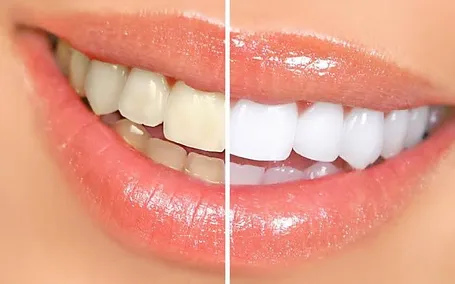
If, after prophylaxis, a yellowish tone persists or there’s diffuse staining, we consider professional whitening (clinical peroxides, controlled timing, and sensitivity management). Here I explain what you can really expect from the treatment and how we personalize it: Teeth Whitening (service). (amdentalstudiogdl.mx)
Realistic expectations
- It lightens several shades, but it doesn’t change the enamel’s “optical personality” (translucency, opalescence).
- Sensitivity is temporary and manageable with protocols and desensitizers.
- It does not “whiten” restorations (composites/crowns).
To understand myths and truths (and avoid DIY mistakes), here’s an article: Is whitening worth it? What almost nobody tells you. (amdentalstudiogdl.mx)
Experience: when we schedule whitening after a thorough cleaning, the result looks more even and lasts longer. We adjust concentration and timing based on your sensitivity and goals; if you’re coming from GDL with a tight schedule, I prefer in-office whitening that’s well planned. (amdentalstudiogdl.mx)
Step 3 — White spots/fluorosis: microabrasion and ICON
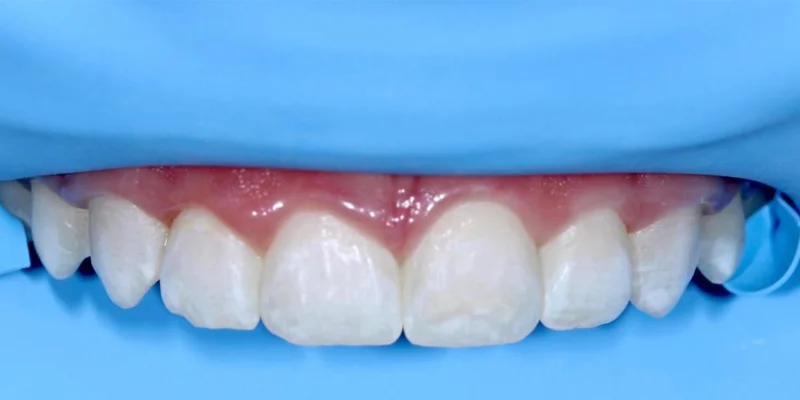
Chalky white spots (mild hypomineralization/fluorosis) don’t respond well to whitening alone—in fact, they can look more noticeable. This is where ICON comes in, a minimally invasive resin infiltration protocol that camouflages the optical difference. Learn more here: ICON. (amdentalstudiogdl.mx)
- Microabrasion: useful when there’s an altered superficial layer; it removes microns of enamel and is then polished.
- ICON: when the problem is sub-surface (changes in porosity/refractive index).
When to move on to veneers?
- Moderate to severe fluorosis with an extended pattern.
- Structural defects + high esthetic demands. In those cases, a fine, well-planned restoration usually gives full control over color and shape.
In practice, many “stubborn white spots” are first resolved with ICON. If the esthetics you’re looking for is a “smile makeover,” we can talk about veneers with ultraconservative preparation. (amdentalstudiogdl.mx)
Step 4 — Veneers (composite/porcelain) for complex cases
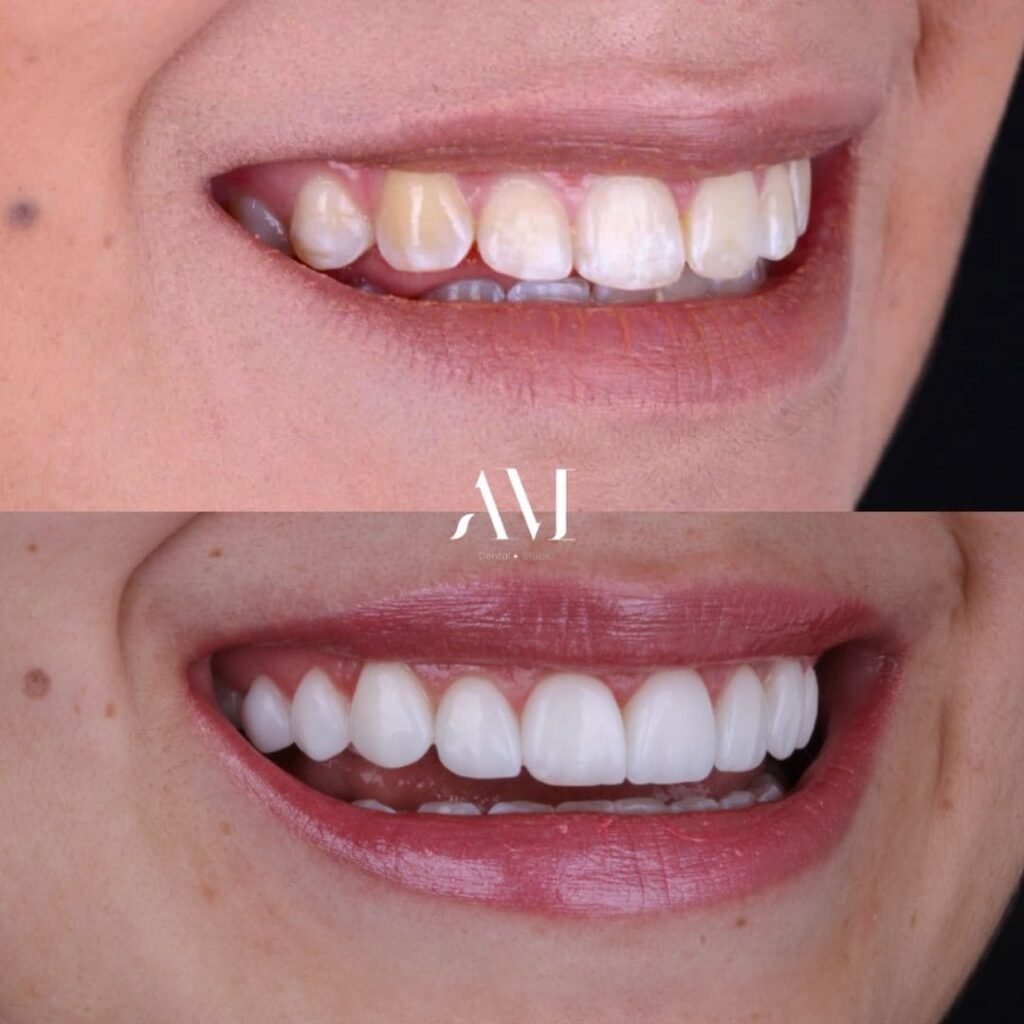
When the goal is full control of color and shape harmony (and when the previous steps aren’t enough), we consider veneers.
- Composite veneers: versatile, affordable, repairable. Ideal for quick touch-ups and selected cases. (amdentalstudiogdl.mx)
- Porcelain veneers: maximum color stability, natural shine, and longevity if you maintain good habits. The key here is planning and avoiding over-preparation: here’s how we do it with minimally invasive techniques. (amdentalstudiogdl.mx)
If you smoke, check out these tips (material, maintenance, color). (amdentalstudiogdl.mx)
Experience: in smiles heavily stained by tetracyclines/moderate fluorosis, porcelain allows us to “mask” the background and design a stable shade. The mock-up test we do in the clinic helps you decide with peace of mind. (amdentalstudiogdl.mx)
Common cases and scenarios in GDL (what we would do)
- “Daily coffee + interdental stains” → Cleaning + polishing; habits (straw, water afterward); if you want whiter, whitening.
- “Mottled white (mild fluorosis)” → ICON; if you’re still not happy with the finish, we consider microabrasion or thin veneers.
- “Mixed staining + high esthetic goals” → Cleaning → Whitening → Veneer design (composite or porcelain depending on goals and habits).
Quick questions and real life
How often should whitening be repeated?
It depends on your staining habits. With good maintenance and professional hygiene, many patients only need a touch-up once a year or every 18 months. Ask if you’re a candidate and which method is best for you.
Which home products should you avoid?
Charcoal, baking soda, “magic erasers,” and vinegars: they abrade or demineralize. If you’re looking for safe options, check our guides first and schedule a consultation.
Does sensitivity prevent me from whitening?
Not necessarily. We adjust concentration/timing and work on your plaque control and brushing technique (yes, aggressive brushing causes staining and long-term sensitivity).
Closing note (from our Zapopan clinic)
My favorite order —because it works— is: accurate diagnosis, start with prophylaxis, add whitening if needed, and reserve ICON/veneers for what truly requires it. If you want a comprehensive esthetic diagnosis and a step-by-step action plan, we’re here at AM Dental Studio GDL. Book your appointment through Services or directly in the Whitening / Veneers section.
